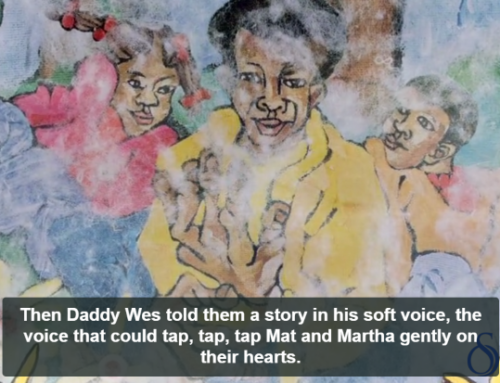Mobile Apps for Your AAC Implementation Toolbox

In celebration of AAC Awareness Month, here’s a wonderful post from the USSAAC SpeakUp blog by Lauren Enders, MA, CCC-SLP. She focuses on apps for making learning language fun. Thanks, Lauren, for helping to expand our AAC toolbox beyond apps for communication and permission to re-post your article.

Lauren Enders
I spend lots of time exploring easy to implement language-building activities that I can share with teams and families. The games, activities, and therapy tools I recommend typically have the following features in common. They
- are engaging and fun (across the age span)
- are reusable
- are open-ended
- are (mostly) low-cost or free
- can be directed or guided by the communication partner
- consider the learner’s interests and allow us to follow his or her lead
 I have found that one of the most popular types of activities that meet the above criteria are a selection of mobile apps in several app categories. Because today’s children (and adults) are so tuned in to mobile devices and because many of us have constant access to these devices, apps can be an excellent addition to our language-teaching “toolbox.” Among the app categories I love to demonstrate and share are open-ended play apps, live photo filter apps, augmented reality apps, and
I have found that one of the most popular types of activities that meet the above criteria are a selection of mobile apps in several app categories. Because today’s children (and adults) are so tuned in to mobile devices and because many of us have constant access to these devices, apps can be an excellent addition to our language-teaching “toolbox.” Among the app categories I love to demonstrate and share are open-ended play apps, live photo filter apps, augmented reality apps, and
digital storytelling apps with screen recording capability.
Open-Ended Play Apps
When I speak about open-ended play apps, I often explain them to people as souped-up Colorforms® (movable plastic cling stickers on backgrounds) with interactive elements including music, animation, and sound effects. With these apps, there is not an intended beginning or end nor is there a way to win or lose. They are simply made to encourage open-ended free play that lends itself beautifully to eliciting language from those learning to communicate using AAC. You can choose characters and backgrounds and decide what happens to the characters and objects within the app. Apps that allow you to take a photo of your language learner and insert it into the app can be particularly engaging. I find these types of apps most suitable for use with children. Some of the apps I love to use include:
- MyPlayHome Apps (iOS, Android, Amazon, Windows)
- Sago Mini Apps (iOS, Android, Amazon)
- Pepi Play Apps (iOS, Android) I really love Pepi Bath 2!
- Toca Boca Apps (iOS, Android, Kindle Fire) Toca Hair Salon me is a favorite!
- Shoe the Goose Apps (iOS)
Live Photo Filter Apps

A live photo filter app was used to give Lauren a cowboy hat, bandana, and blue eyes!
- MSQRD App (iOS, Android)
- MRRMRR App (iOS, Android)
- YouCam Fun Live Face Filters App (iOS, and Android)
- Epic Photo Stickers Toon Blitz App (iOS only)
- Modiface Makeup App (iOS and Android)
- Other apps allow you to change hair color and eye color!
Augmented Reality Apps
Augmented Reality (AR) apps are another wonderful addition to your AAC implementation bag of tricks. With these apps (which also tend to be fun for all ages), you can superimpose a wide variety of computer-generated images over a view of your world taken using the camera on your device. Your learner can dictate what and where they want items placed in their environment and then talk about what they see! You can then use stills or videos you take within the app for additional language activities. I started a trend this year at the Closing the Gap conference with attendees posting photos of dinosaurs roaming the conference hall! What fun!
- Leo Augmented Reality Video/Leo AR App (iOS, Android)
- Figment AR App (iOS, Android)
- Do Not Touch by Nickelodeon App (iOS)
- CamAR Animals – AR Stickers App (iOS)
- Action Movie FX App (iOS)
- Monster Park – AR DinoWorld App (iOS, Android)
Digital Storytelling Apps with Screencasting Features

A digital storytelling screenshot made with the Puppet Pals app featuring Lauren.
- Puppet Pals 2 App (iOS) The paid version of this app allows you to put your head on a character’s body!
- Sock Puppets App (iOS)
- ToonTastic 3D App (iOS, Android)
- PuppetMaster App (iOS) This one lets you make any imported image with a head, arms, torso, and legs into a jointed puppet! Fun!
One More Favorite
One last app that I find to be a HUGE hit with all ages is My Talking Pet Pro. With this app, you make a still picture of an animal (or anything with a head eyes and mouth) talk using a recorded voice (natural speech or AAC voice output). You can even alter the pitch of the recorded voice for extra fun!
It’s important to note that when you use mobile apps as a vehicle for eliciting and working on language development, make sure the language learner is using his or her language to control what YOU do with the app. As the communication partner and language facilitator, you will almost always need to maintain control of the device and manipulate the app based upon the language they provide. If you relinquish control of the device to the language learner, your opportunities for language are likely to plummet while he or she becomes immersed in the physical task of playing with the device. If you are working with a student/client who really needs to be able to be in control, you can always allow a specified amount of time for free play with the app at the end of your session.
The apps I’ve shared by no means represent all app categories or all apps that can be used to help develop language skills of those learning to communicate using AAC. Once you get started using a set of simple, open-ended apps to support language development, it will become much easier to think outside the box and broaden your educational or therapeutic repertoire. Have fun!
Monthly Blog Digest
Search the blog
State AT Program Blogs
California
Florida
Indiana
Kentucky
Louisiana
Maryland
Massachusetts
Michigan
Montana
North Carolina
North Dakota
Utah
State AT Program Blogs
The AT3 Center, the Association of AT Act Programs (ATAP), and the Administration on Community Living (ACL) make no endorsement, representation, or warranty expressed or implied for any product, device, or information set forth in this blog. The AT3 Center, ATAP, and ACL have not examined, reviewed, or tested any product or device hereto referred.







